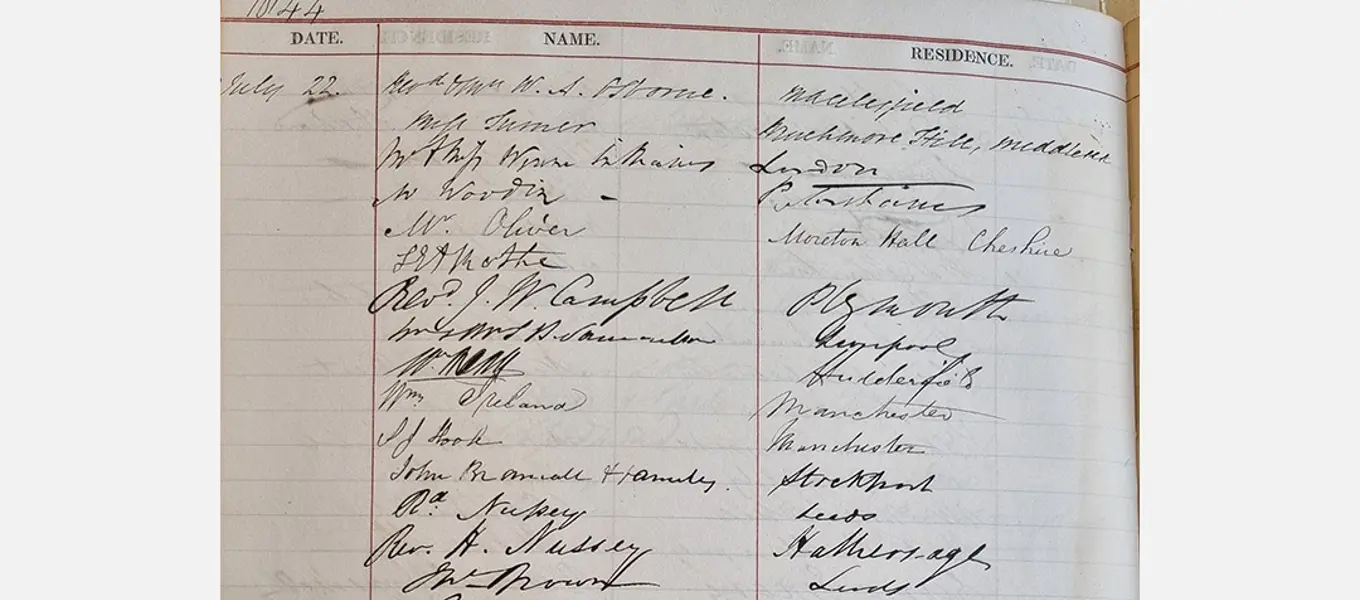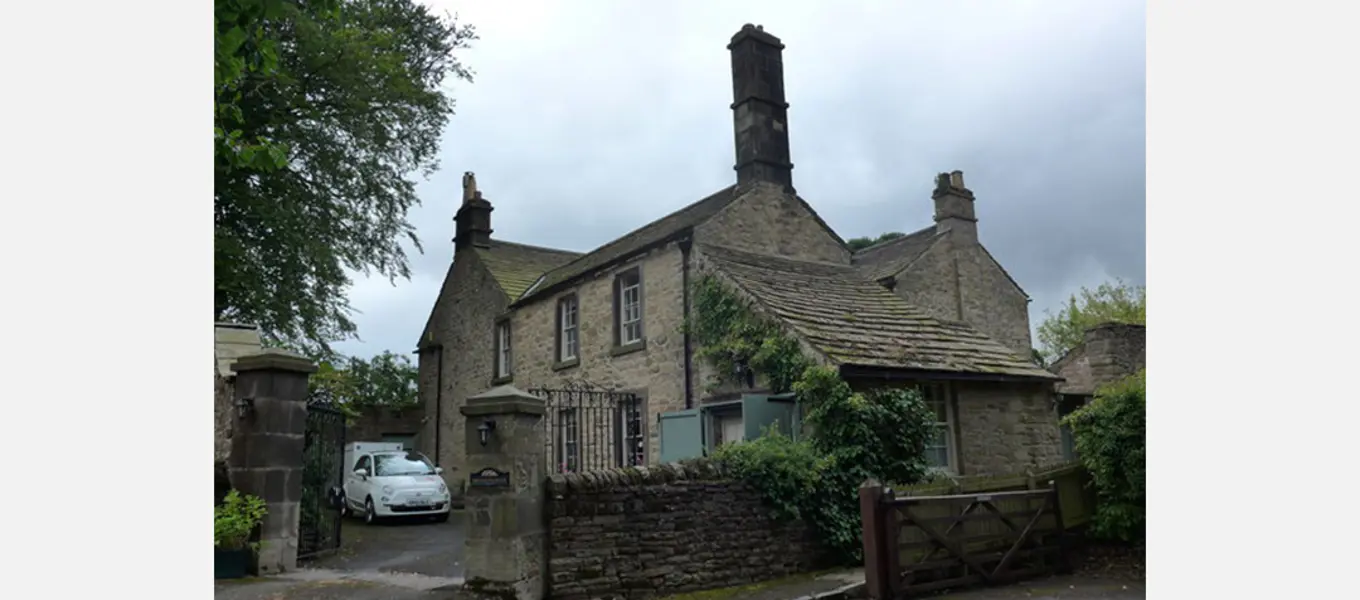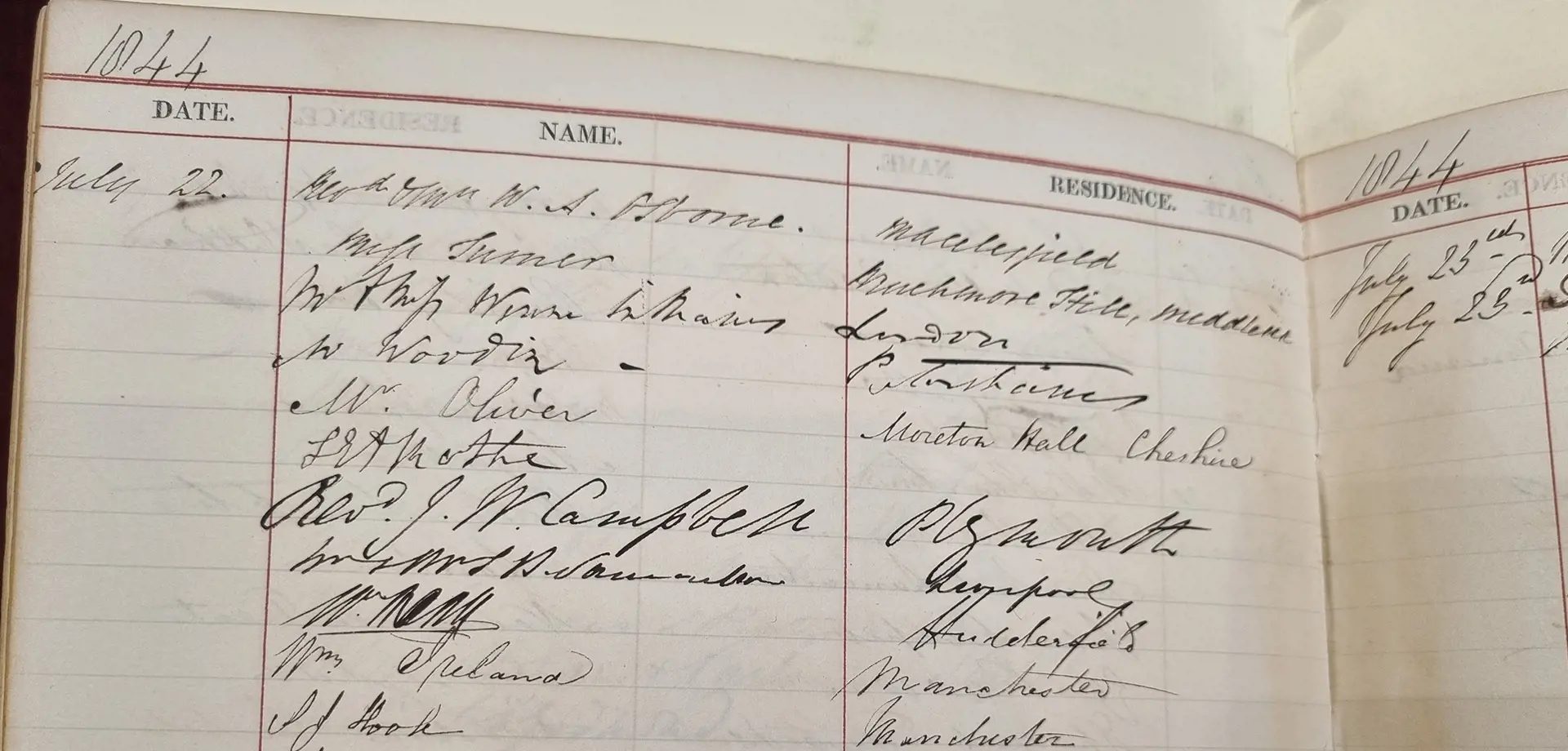Collections and Archives Assistant Ian Gregory reports on a 19th-century visitor to Chatsworth.
The Brontë sisters are among the most famous novelists in British history. Jane Eyre and Wuthering Heights are loved by millions all over the world. On July 22, 1844, the sisters did not visit Chatsworth themselves, but someone they knew very well did.
Charlotte Brontë had a lifelong friend called Ellen Nussey and Ellen had a brother called Henry. On the date given above a Revd. H. Nussey signed into our Visitor’s Book. He gave his place of origin as Hathersage and Ellen’s brother became vicar of Hathersage in April 1844. The living of Hathersage was in the gift of the Duke of Devonshire, and the 6th Duke’s archive includes a letter in which he authorised the appointment of Henry Nussey to the position. It is unknown whether the two men ever met, but it is interesting to note that Henry’s visit to Chatsworth was made just three months after he was granted his living by the Duke.

In the year after Nussey’s visit to Chatsworth, Charlotte Brontë called on the Nusseys at Hathersage and her visit provided inspiration for Jane Eyre. The fictional village of Morton, which figures in the novel, was based on Hathersage. A prominent local family bore the name Eyre. North Lees Hall, a 16th century house not far away, is believed to be the model for Thornfield Hall in the story.
Many believe that Henry Nussey also inspired a prominent character in Jane Eyre. Our heroine is destitute after leaving Mr Rochester. She is rescued by a clergyman called St John Rivers, who proposes to her in very business-like practical fashion, wishing her to accompany him to India where he plans to become a missionary. Henry Nussey (who had also considered becoming a missionary) proposed to Charlotte Brontë in a similarly unemotional manner in 1839. Charlotte rejected him because she found him dull and knew that they would be incompatible. It seems likely that fictional Rivers was based on the real Nussey.

All ends happily for Jane Eyre and Rochester. That’s wasn’t so for poor Henry. He developed mental health issues at an early age, possibly due to a head injury. By July 1847 he had given up his job as a vicar on account of this. He travelled in Europe in the hope of restoring his health but to no avail. At some point in the 1850s he was admitted to a lunatic asylum called Arden House. In 1860 he took his own life.
When Henry arrived at Chatsworth, Jane Eyre had yet to be published. Did Henry even know that Charlotte had ambitions of being a writer? If so then could he have imagined that, one day, his sister’s friend would be a household name? He probably could not have.






